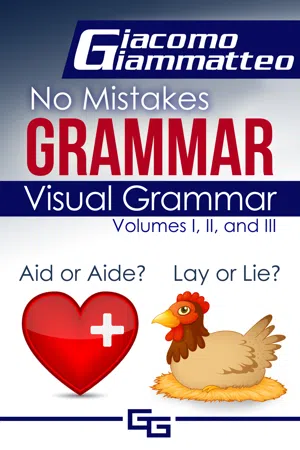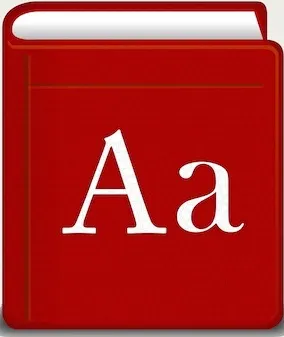Misusing words when you speak gives an impression that you probably don't want to give.
Misusing words when you write is even worse, because it's permanent. Someone might forget what you said, but if it's written, well...it's there to refer to forever. With that thought in mind, let's try to get it straight.
Don't get me wrong. I'm not here to tell you how to write. I have a difficult enough time myself. When I send a manuscript to my editor, I get it back with more editing marks than you can imagine.
So what is my goal? To see if I can help even one person improve their writing or speech enough for them to be happy with it. If I sell a few books in the process, my animals will be happy. (All proceeds go to the animals on my sanctuary.)
This book is split it into three sections—one for the ordinary people, the ones who only want to see what they’re doing wrong; one for people who rely on words for business communication (and who need to get it right); and one for the maniacs—like me—who simply want to get things right for the sake of being right.
The first section consists mostly of misused words and sayings (and a few redundancies)—the things you'd encounter in everyday life. It covers almost 200 everyday misused words (187).
The second section covers similar points (not the same words) as the first, but also includes sections on Absolutes (words that shouldn't be modified) Business Redundancies, Capitalization, (a horrible misuse in business) Compound Modifiers, Mispronunciations, Punctuation, Sayings, and Times and Dates. it's not a complete grammar book, but it does cover a lot of territory.
The third section covers more redundancies, more absolutes, capitals, eponyms, flat adverbs, initialisms and acronyms, Latin phrases, plurals of compound words, and more.
Let's face it, the last thing you want anywhere—but especially in business writing—is to have the meaning of your words taken the wrong way. So whether you write cover letters, résumés, business proposals, or only emails to colleagues, get the book and learn to do it right.
It's a sin, but if you read enough blogs, and you know what you're looking for, you’ll see hundreds—if not thousands—of mistakes every week. I have even caught grievous errors on grammar sites.
If you're going to write about grammar, you should make all efforts to get it right. I would never think of correcting someone's grammar in public, and yet one of the few TV shows I watch features a character who does just that. I wouldn't object, except he makes grammar mistakes—obvious ones.
My theory is that if you're going to have a character correct grammar, he better damn well be free of grammar mistakes.
Another note:
I thought about using definitions from dictionaries, but half of them I couldn't understand, so I made my own definitions. I hope that works out okay.
In some cases, quotes of famous people were used. I got these from Brainy Quote, which can be found here. http://www.brainyquote.com
Throughout the book I used 🐗 as a symbol for a tip, or a way to remember how to tell the difference between words.
🐗 Dennis is my pet wild boar. We rescued him when he was only a few days old, and he's been with us for five years now. Of course, he's a little bigger, weighing in at about 400 lbs. When we first got him, he was twelve pounds.
In any case, I used an image of a wild boar to draw attention to a particular section/tip. I hope it will help you remember it.
Misused Words
In the "old days" the written word was not only the preferred method of long-distance communicating, it was the only method. Marriages were arranged, business partnerships discussed, terms decided upon, and deals concluded. Heads of state negotiated treaties and settled territory disputes using "words."
Then came the telephone, and the airplane, and other forms of modern transportation and communication, and things changed. Emphasis shifted from the written word to the spoken word.
Transportation made getting together in person much easier and less expensive and, if that wasn't possible, the telephone sufficed as a backup. The result was that the written word faded into near obsolescence, and the generation that embraced this new technology couldn't have been happier; grammar had never been more than a necessary evil anyways anyway.
And then something strange happened. Technology advanced so rapidly that the planes and phones that had ...

